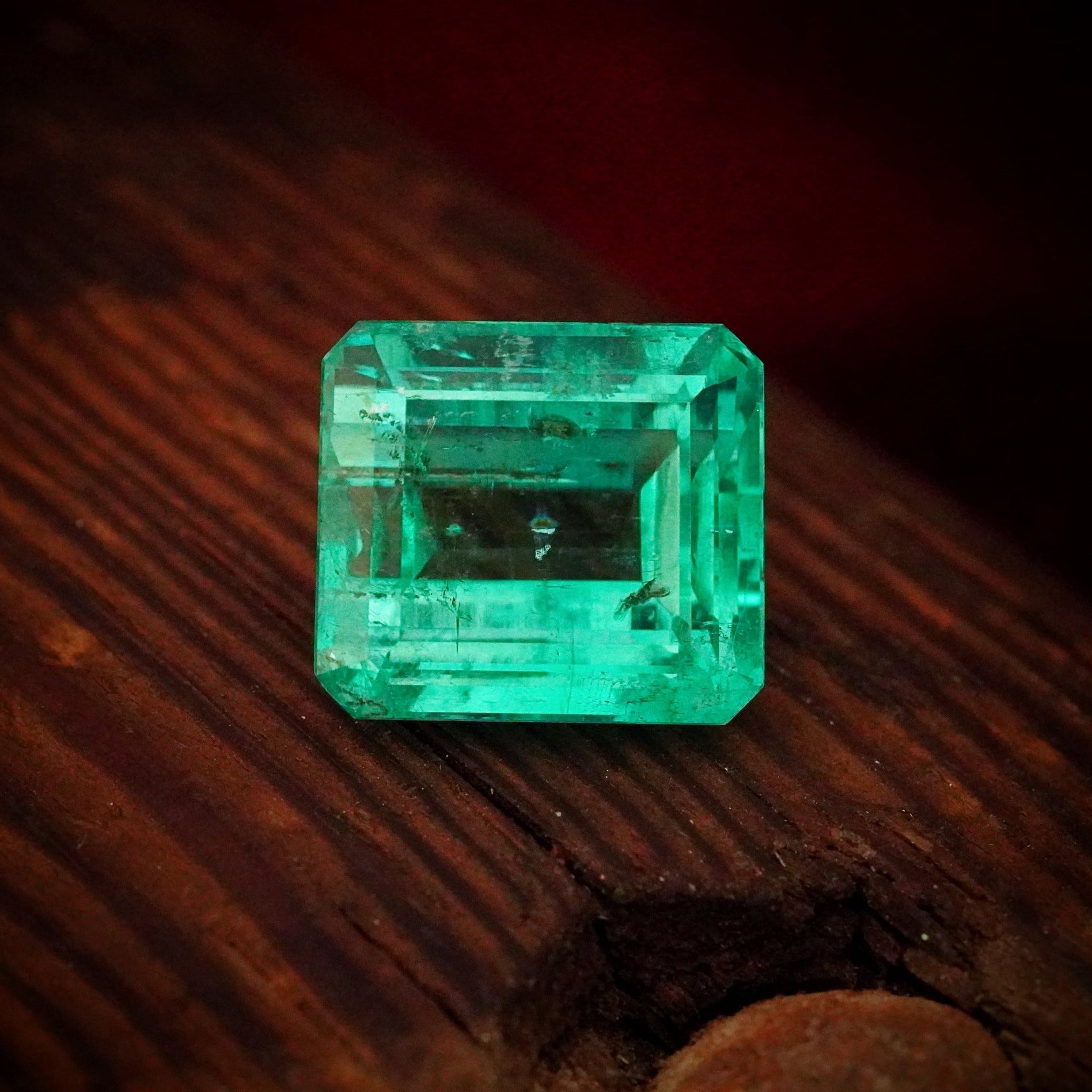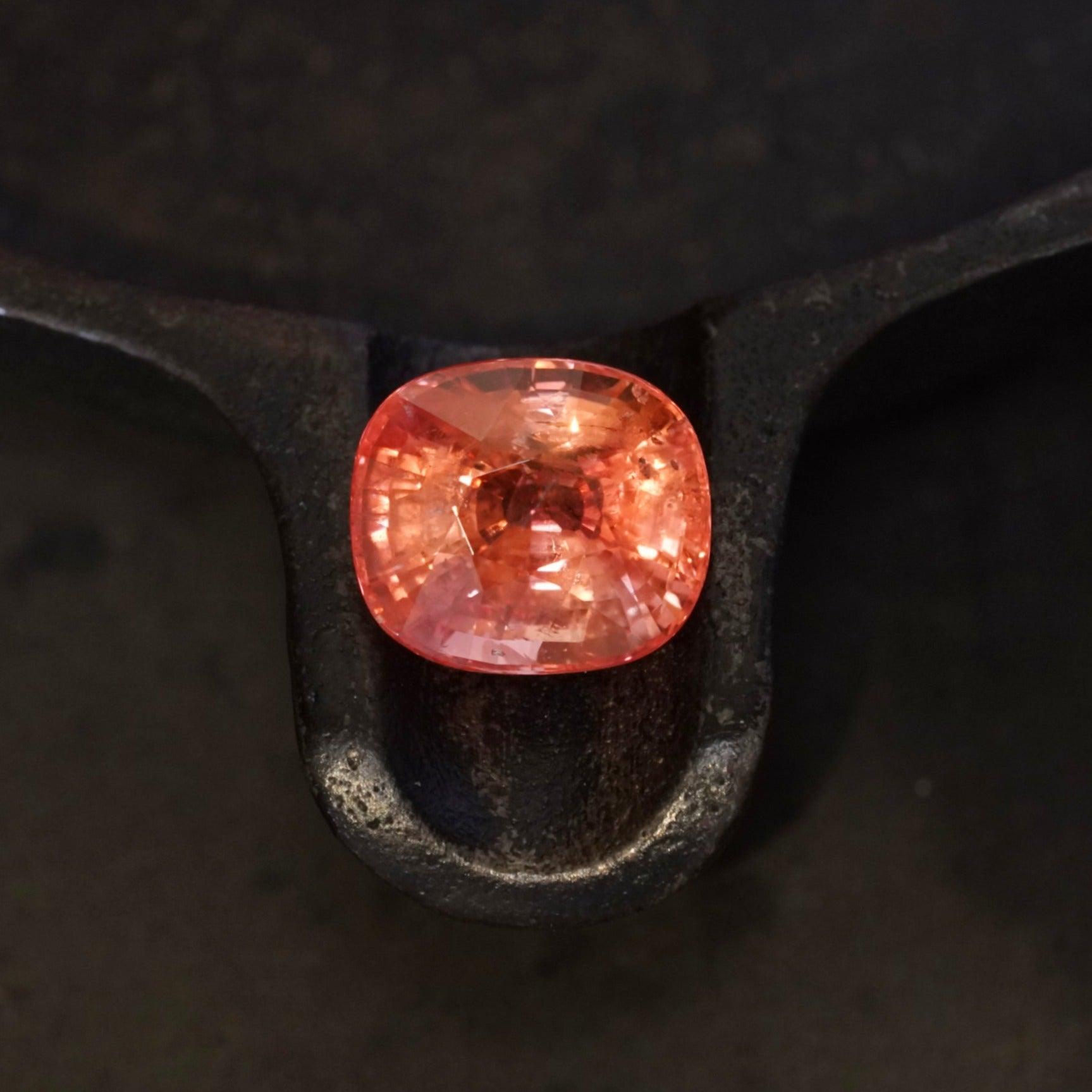
Spinel Unmasked: Get to Know ‘The Great Imposter’
Imagine being a standout piece in the renowned Crown Jewels of the United Kingdom, alongside the illustrious Cullinan II diamond, and not receiving the recognition you deserve. This is the story of the stunning gemstone spinel. For centuries, spinel was often mistaken for other colored gems, especially ruby. However, this Cinderella stone, with its array of spectacular colors and great brilliance, is now stepping out of the shadows into the limelight of modern jewelry design.
The Distinctions Between Spinel and Ruby
Until the late 18th century, all red stones were classified as ruby, making it easy to confuse spinel with ruby due to their similar appearance and shared mining locations.
However, in 1783, mineralogist Jean-Baptiste Louis Romé de l’Isle developed a test that distinguished spinel from ruby, effectively founding the science of gemology. He discovered that while both gems acquire their red color from traces of chromium, ruby is an aluminum oxide mineral, whereas spinel is a magnesium aluminum oxide mineral.

Another notable difference is that ruby possesses a hexagonal crystal structure, while spinel features a cubic crystal structure. This cubic structure typically forms octahedral crystals resembling two pyramids joined at their bases. The pointed shape of these raw crystals may have inspired the name “spinel,” which is thought to derive from the Latin word “spina,” meaning “thorn.” Additionally, as spinel crystals grow, they can develop flattened forms when the pyramids rotate against each other.
Spinel is also singly refractive like diamond, meaning it exhibits a consistent vibrant color from all angles, along with exceptional transparency and “fire.” In contrast, ruby is doubly refractive, causing light to split within the stone, resulting in different colors such as purplish-red or orangey-red, visible only from specific angles.

A 9.47-carat, cushion-shaped, unheated pink spinel from the Jogani collection.
Both ruby and spinel can also fluoresce, or appear to glow, under ultraviolet light, such as sunlight; however, spinel typically exhibits a pinkish hue, while ruby tends to show a bluish tone. This remarkable glow may have contributed to the belief that the name “spinel” originates from the Greek word for “spark,” reflecting its striking fire and brilliance.
Like ruby, spinel can also showcase unique phenomena such as color change, where its color shifts under different lighting conditions, and asterism, which creates a star-like effect when the stone is cut as a cabochon. While both gems may contain inclusions, spinel often features fascinating inclusions that resemble human fingerprints.

One of the key differences is the range of colors available in spinel, which includes vibrant reds, rich purples, and alluring blacks. The most valuable hues are “stoplight” red, cobalt blue, intense hot pink, and vivid orange.
As you can see, ruby and spinel are distinct gemstones. Without the advancements in gemology, spinel may still be wrongly perceived as merely a "great imposter," overshadowed by ruby’s fame.
Spinel’s Masquerade Through the Ages
Despite being officially recognized in 1783, spinel has held significant value for centuries. Red spinels were discovered in Buddhist tombs in Kabul, Afghanistan, as early as the first century B.C., with mining reportedly beginning around 750–950 A.D., as noted by Marco Polo.
During the Mughal Empire, deep red spinels, often referred to as “Balas rubies,” were highly prized. These stones likely earned their name from the region of Balascia (modern-day northeastern Afghanistan, eastern Tajikistan, and Tashkurgan county in China). The mines in central and southeast Asia produced remarkably large, fine spinels, with the most renowned originating from Tajikistan.

The Imperial State Crown, part of the Crown Jewels of the United Kingdom, features “The Black Prince’s Ruby,” which is actually a 170-carat red spinel.
Many notable spinels were misidentified as rubies, having passed from one ruler to another as war trophies. Consequently, some of the world’s most famous jeweled creations contain spinels.
One notable example is the Black Prince’s Ruby, set in the Imperial State Crown of the United Kingdom, located just above the Cullinan II diamond. This approximately 170-carat gem is one of the largest gem-quality red spinels, with a unique irregular cabochon shape. Its historical journey begins in 14th-century Spain, where it passed through the hands of various Moorish and Spanish kings. Eventually, it was gifted to Edward, Prince of Wales—known as the Black Prince—by Don Pedro, King of Castile (often referred to as Pedro the Cruel), as payment for his victory at the Battle of Nájera in 1367. It then reportedly narrowly avoided destruction when worn on Henry V’s helmet at the Battle of Agincourt in 1415. Today, it remains a cherished part of the Crown Jewels of the United Kingdom, used in formal events such as the State Opening of Parliament.

The Imperial Crown of Russia, used in the coronations of Catherine the Great through Nicholas II, features a dark red spinel weighing approximately 400 carats.
Another illustrious example is the Imperial Crown of Russia, used during the coronations from Catherine the Great in 1762 to Nicholas II in 1896. This crown features a striking dark red spinel weighing approximately 400 carats, considered the second-largest gem-quality red spinel after a 500-carat example in the Royal Crown Jewels of Iran.

Another example is the Timur ruby, a 361-carat red spinel, unfaceted and polished, that’s also part of the Crown Jewels of the United Kingdom. It’s named after the ruler Timur, founder of the Timurid Empire, and inscribed with the titles of five of its previous owners. It was reclassified as a spinel in 1851 and presented to Queen Victoria as a gift. It was then set into a necklace by Garrard in 1853.
Spinel: A Luxurious Alternative
Spinel continued to adorn jewels through the 1800s and 1900s, but as people realized it wasn’t ruby, its popularity waned, earning it the label of “the poor man’s ruby.” The rise of synthetic spinel, especially as a stand-in for more expensive gems in birthstone and class rings, further muddied the waters, leading many to associate spinel with imitations rather than recognizing its natural beauty.
Today, however, spinel is reclaiming its status as a sought-after gem. Although red spinel is generally rarer than ruby, it can be found in larger sizes and at a lower price point. With a hardness of 8 on the Mohs scale, spinel is nearly as durable as ruby for use in jewelry. Additionally, spinel is typically very clean and not routinely treated to enhance its appearance, unlike many rubies that undergo heat treatment.

Spinel also offers a stunning spectrum of colors, presenting numerous hues and tonalities, often at lower prices than other gemstones of similar color—consider black spinel as an alternative to black diamond. Various regions contribute to its diverse color palette: Tajikistan is known for the finest reds; Myanmar produces hot pinks and reds; Sri Lanka offers pinks, blues, and purples; Brazil is home to rare greens; and Vietnam provides a variety of pinks, deep reds, vivid blues, violet, violet-blue and purple; and more. Recent discoveries in Tanzania include a bright pinkish to orangey-red variety that may rival pink diamonds, especially as the Argyle Mine in Western Australia has closed.
Fine-quality rough spinel, typically rarer in sizes over five carats, is often cut into non-standard shapes to preserve weight, resulting in eye-catching jewelry designs. Spinel is also fashioned into popular cushion and oval shapes, exhibiting captivating brilliance, exceptional clarity, and vitreous luster when expertly cut.
Spinel: A Designer's Muse
For instance, a Cartier ring featuring a 20.18-carat cushion-shaped pink spinel flanked by calibré-cut emeralds and brilliant-cut diamonds sold for over $328,000 at Sotheby’s November 2019 Magnificent Jewels and Noble Jewels sale, more than doubling the high end of its pre-auction estimate.

This ring by Cartier featuring a 20.18-carat pink spinel sold for more than $328,000 at auction in 2019. Photo courtesy of Sotheby's.
Christie’s Maharajas and Mughal Magnificence sale in New York in June 2019 saw an antique Imperial necklace—estimated at $1 million to $2 million—fetch over $3 million. This stunning piece features seven tumbled spinel beads from 17th-century Tajikistan, alongside pearls, and concludes with a pear-shaped cabochon emerald drop.


Piaget’s “Sunlight Journey” collection draws inspiration from the Amalfi Coast, using spinels and other gemstones to represent the sun’s daily path and the mood it creates. One necklace showcases a cushion-shaped yellow diamond surrounded by red spinels and yellow and colorless diamonds to represent a flaming sunset, while a cuff watch radiates with colorful beams of red spinels and pink sapphires from a central purplish-rose spinel.

With its rarity, intriguing history, and remarkable qualities, spinel is a truly extraordinary gemstone, perfect for gem and jewelry lovers. At Jogani, we’re excited to offer natural spinels in various hues. Once viewed, spinel’s arresting colors, luminosity, and depth of beauty are sure to leave a lasting impression, finally earning its rightful place among the world’s most celebrated gems.


